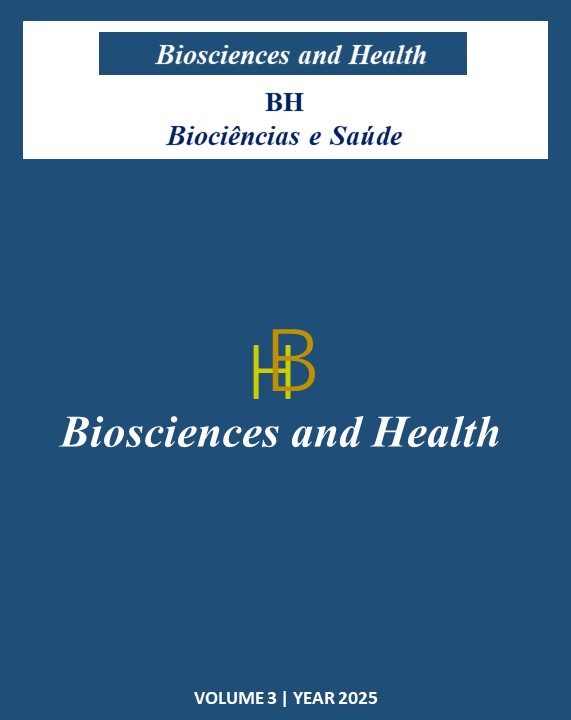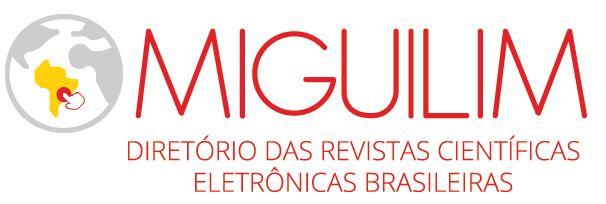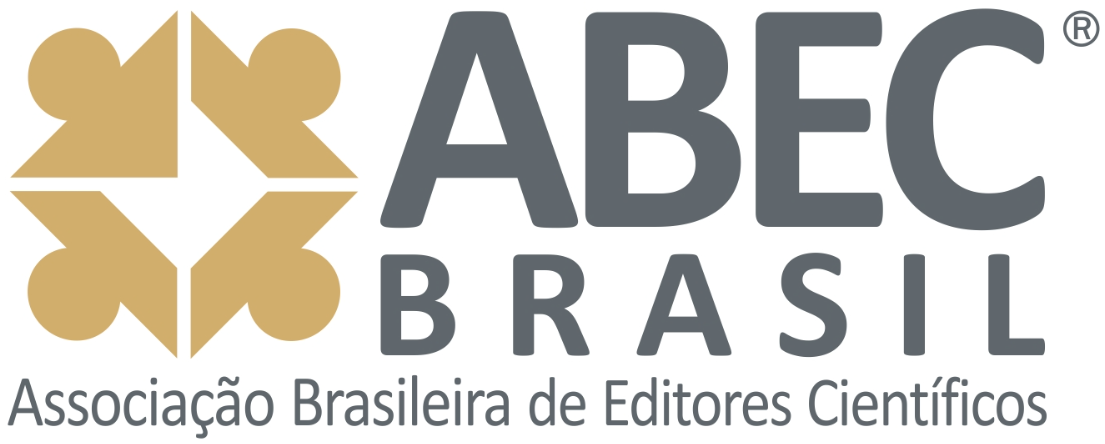Desafios na implantodontia: biomateriais e sua contribuição na reabilitação de maxilas atróficas
DOI:
https://doi.org/10.62331/2965-758X.v3.2025.71Palavras-chave:
Biomateriais, Atrofia maxilar, Enxerto ósseo, Implante dentárioResumo
A reabilitação de maxilas atróficas representa um desafio na implantodontia, devido à perda de volume e qualidade óssea, que compromete a estabilidade e o sucesso na instalação de implantes dentários. Este estudo teve como objetivo analisar, de forma integrativa, o desempenho de diferentes biomateriais aplicados em enxertos ósseos na reabilitação de maxilas atróficas, destacando suas contribuições e limitações. Realizou-se uma revisão integrativa seguindo diretrizes PRISMA, com busca nas bases PubMed e BVS. Dos 382 estudos identificados, 19 foram incluídos. Enxertos autógenos mantêm-se como padrão-ouro, porém com limitações de morbidade. Biomateriais xenógenos e aloplásticos preservam volume ósseo, mas com integração mais lenta. Compósitos destacam-se por equilibrar propriedades biológicas e mecânicas. Conclui-se que a escolha do biomaterial deve considerar as condições clínicas do paciente, e avanços em scaffolds bioativos prometem superar limitações atuais.
Referências
ALSHAMMARI, M. M.; ALSHAMMARI, O. A.; ALTURKI, H. M., et al. Comparative analysis of different bone graft materials. Migration Letters, v. 19, n. S5, p. 967-1000, 2022.
BAL, Z.; KAITO, T.; KORKUSUZ, F., et al. Bone regeneration with hydroxyapatite-based biomaterials. Emergent Materials, v. 3, p. 521-544, 2020. https://doi.org/10.1007/s42247-019-00063-3.
FATTANIAN, H.; MANSOURI, K.; MANSOURI, N. Biomaterials, substitutes, and tissue engineering in bone repair: current and future concepts. Comparative Clinical Pathology, v. 28, p. 879-891, 2019. https://doi.org/10.1007/s00580-017-2507-2.
GEORGEANU, V. A.; GINGU, O.; ANTONIAC, I. V., et al. Current options and future perspectives on bone graft and biomaterials substitutes for bone repair, from clinical needs to advanced biomaterials research. Applied Sciences, v. 13, n. 8471, 2023. https://doi.org/10.3390/app13148471.
HEITZ-MAYFIELD, L. J. A. Rehabilitation of atrophic maxillae using bone grafts and biomaterials: current evidence and future directions. Clinical Oral Implants Research, v. 31, n. 10, p. 888-899, 2020.
HERMONT, A.P.; ZINA, L.G.; da SILVA, K.D.; et al. Revisões integrativas em odontologia: conceitos, planejamento e execução. Arquivos de Odontologia, v. 57, p. 3-7, 2022. https://doi.org/10.7308/aodontol/2021.57.e01.
KAHNBERG, K. E.; HENRY, P. J.; HIRSCH, J. M., et al. Clinical evaluation of the zygoma implant: 3-year follow-up at 16 clinics. Journal of Oral and Maxillofacial Surgery, v. 65, n. 10, p. 2033-2038, 2007. https://doi.org/10.1016/j.joms.2007.05.013.
KUCKO, S. K.; RAEMAN, S. M.; KEENAN, T. J. Current advances in hydroxyapatite- and β-tricalcium phosphate-based composites for biomedical applications: a review. Biomedical Materials & Devices, v. 1, p. 49-65, 2023. https://doi.org/10.1007/s44174-022-00037-w.
MALEVEZ, C.; DAELEMANS, P.; ADRIAENSSENS, P.; et al. Use of zygomatic implants to deal with resorbed posterior maxillae. Periodontology 2000, v. 33, p. 82-89, 2003. https://doi.org/10.1046/j.0906-6713.2002.03307.x.
MARGONAR, R.; DOS SANTOS, P. L.; QUEIROZ, T. P.; et al. Rehabilitation of atrophic maxilla using the combination of autogenous and allogeneic bone grafts followed by protocol-type prosthesis. Journal of Craniofacial Surgery, v. 21, n. 6, p. 1894-1896, 2010. https://doi.org/10.1097/SCS.0b013e3181f4af65.
PAIVA, L. G. J.; BATISTA, A. C.; CARVALHO, L. C.; et al. Avaliação histológica de hidroxiapatita sintética associada a fosfato de cálcio (β-TCP) utilizados em levantamento de assoalho de seio maxilar. Revista de Odontologia da UNESP, v. 43, n. 2, p. 119-123, 2014. https://doi.org/10.1590/rou.2014.021.
PARK, J. W. Advances in biomaterials for bone regeneration: from bench to clinical practice. Journal of Clinical Implant Dentistry, v. 18, n. 7, p. 545-560, 2021.
SAPOZNIKOV, L.; HUMPHREY, M. Progress in dentin-derived bone graft materials: a new xenogeneic dentin-derived material with retained organic component allows for broader and easier application. Cells, v. 13, n. 21, p. 1806, 2024. https://doi.org/10.3390/cells13211806.
SCHMIDT, A. H. Autologous bone graft: is it still the gold standard? Injury, v. 52, p. S18-S22, 2021. https://doi.org/10.1016/j.injury.2021.01.043.
SCHWARZ, F. Implant treatment in atrophic maxillae: a systematic review of long-term outcomes. Journal of Periodontology, v. 93, n. 2, p. 156-172, 2022.
UGURLU, F.; YILDIZ, C.; SENER, B. C.; et al. Rehabilitation of posterior maxilla with zygomatic and dental implant after tumor resection: a case report. Case Reports in Dentistry, v. 2013, p. 930345, 2013. https://doi.org/10.1155/2013/930345.
VAN ZYL, A.; HARTSHORNE, J.; CARRASCO-LABRA, A. The impact of four harvesting techniques on the cell viability and osteogenic behaviour of cells in autogenous bone grafts: a critical appraisal of an experimental study. Open Journal of Implant Dentistry, v. 1, n. 1, 2013. http://dx.doi.org/10.4102/ojid.v1i1.6.
XEQUE, Z.; NAJEEB, S.; KHURSHID, Z.; et al. Materiais biodegradáveis para reparação óssea e aplicações de engenharia de tecidos. Materiais, v. 8, n. 9, p. 5744-5794, 2015. https://doi.org/10.3390/ma8095273.
Downloads
Publicado
Como Citar
Edição
Seção
Licença
Copyright (c) 2025 Biosciences and Health

Este trabalho está licenciado sob uma licença Creative Commons Attribution 4.0 International License.









